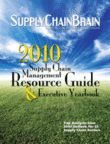
Visit Our Sponsors |
|
|
|
|
|
|
|
|
|
|
|
|
|
|
|
|
|
|
|
|
|
|
|
|
|
|
|
|
|
|
|
|
|
|
|
|
|
|

High-tech supply chains learned from the dot-com era. They learned to better manage inventories using more effective planning models and tighter supplier collaboration. What will be the lesson from the 2008/2009 recession? Customer collaboration will be required in design, cost, solution, service and support. The information consumer is digital, highly mobile, and learning and sharing at a tremendous pace. Purchase decisions are influenced by online groups and networks. Demand-driven supply chains have to move beyond the traditional store-front replenishment model, and towards a segmented, customer-focused model.
Take a major mobile phone brand that monitored customer behavior patterns. By understanding their unique needs, the company found that a large segment used only 10 percent (15 of 150) of the available features on its phone. The cost to serve this segment was too expensive. The company redesigned the phone to have only 15 features. The design, marketing and materials costs went down. The largest cost reduction? Service and support. It's a lot less expensive to train support people on 15 features than 150.
Product design is being influenced more by the information consumer as well. In a recent survey on high-tech, new-product strategies, 63 percent of respondents stated that customer needs management was the most important requirement in their product lifecycle management solution. Of note, 43 percent said they have a process to collect online customer feedback and directly feed that information into new product features. For some high-tech supply chains, downstream partners and key customers are now part of an S&OP structure, participating in pre-S&OP meetings and decisions.
The Outlook
In 2010, the information economy will continue to drive customer collaboration in high-tech supply chains. Being demand-driven will require a much greater relationship with each customer. Effective segmentation of these customers will ensure the right resources are focused on the highest profitability. Therefore, we see an increased need for integrated scenario modeling and network optimization solutions, much more flexible replenishment models, and greatly improved demand-planning processes. Only then will high-tech supply chains be able to serve the information consumer.
RELATED CONTENT
RELATED VIDEOS
Timely, incisive articles delivered directly to your inbox.

